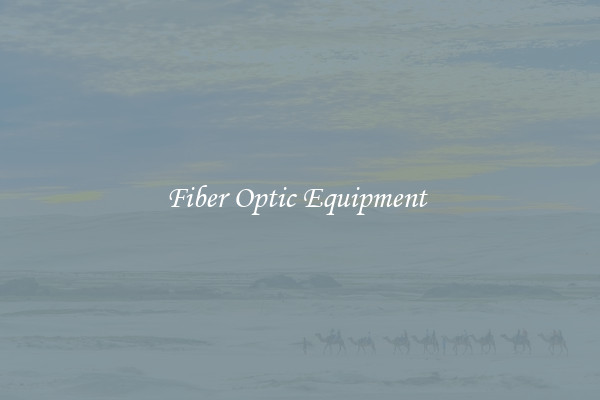Fiber Optic Equipment
Fiber Optic Equipment: Revolutionizing the Speed and Reliability of Data Transmission

In an increasingly interconnected world, where seamless connectivity and lightning-fast data transmission have become the norm, the role of fiber optic equipment cannot be overstated. This cutting-edge technology has revolutionized the telecommunications industry, providing unparalleled speed and reliability in data transmission.
Fiber optic equipment is used to transmit data through a network of thin, flexible glass or plastic fibers. These fibers, capable of carrying vast amounts of data, are the backbone of the modern communications infrastructure. With the ability to transfer data at the speed of light, fiber optic equipment has drastically increased the bandwidth and efficiency of data transmission.
One of the primary advantages of fiber optic equipment is its incredibly high data transfer speeds. Traditional copper-based cables, which were widely used in the past, simply cannot compete with the lightning-fast speeds of fiber optic cables. Whereas copper cables transmit data through electrical signals, fiber optic cables use pulses of light to carry data, resulting in significantly faster transmission speeds. This makes fiber optic equipment ideal for applications that require high-speed data transfer, such as video streaming, cloud computing, and online gaming.
Another crucial benefit of fiber optic equipment is its immunity to electromagnetic interference (EMI) and radio frequency interference (RFI). Unlike copper cables, fiber optic cables are not affected by external electromagnetic fields or electrical currents, which can distort or disrupt data transmission. This immunity to interference ensures a more reliable and stable connection, allowing for higher-quality transmissions and improved overall performance.
Furthermore, fiber optic equipment is known for its exceptional signal strength over long distances. While traditional copper cables suffer from signal loss and degradation over extended distances, fiber optic cables can transmit data without any loss of signal strength for more than tens of miles. This characteristic makes fiber optic equipment indispensable for long-distance data transmission, such as telecommunications networks connecting different cities or countries.
In addition to its technical advantages, fiber optic equipment is also applauded for its smaller size and lighter weight compared to traditional copper cables. This compact design makes fiber optic cables easier to install and maintain, saving both time and resources. Moreover, fiber optic equipment is not susceptible to corrosion, which eliminates the need for expensive maintenance and prolongs its lifespan.
As the demand for faster and more reliable data transmission continues to rise, the indispensability of fiber optic equipment becomes evident. Its ability to transmit data at lightning-fast speeds, immunity to interference, long-distance reach, and compact design make it the go-to solution for various industries, including telecommunications, internet service providers, healthcare, and finance.
In conclusion, fiber optic equipment has revolutionized the telecommunications industry, enabling faster and more reliable data transmission than ever before. Its high-speed capabilities, immunity to interference, long-distance reach, and compact design make it the preferred choice for modern communications infrastructures. With the world becoming increasingly dependent on seamless and efficient data transmission, fiber optic equipment plays a pivotal role in shaping the future of connectivity.

View details

View details

View details

View details








